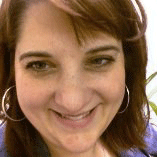 Wendy Boren, RN, BS
Wendy Boren, RN, BS
Clinical Consultant/Educator
Quality Improvement Program for Missouri (QIPMO)
University of Missouri-Columbia
Last week I was visiting with a young man whose family started out in the long-term care business over 80 years ago by opening the upstairs of their home to elders from the community who just needed a little more help. His mother, Willa, felt it was her duty to give back to the community and help others in need. She wasn’t a nurse and there wasn’t a doctor in the family but she knew how to cook, pass pills, wash clothes and people, and give hugs or sit down for a nightcap if that’s where the need arose. The Elders who could walk lived upstairs and were free to come and go as they chose. It was their home and there wasn’t a list of rules at the door. The others were cared for in bedrooms on the main level. Family and residents cooked, cleaned, and cared for each other. It was simply people taking care of people. When Medicare and Medicaid took root in the 1960s, Willa found that her own tenants were having to move to a home across town where payment was accepted in the form of reimbursement from the government. The difference was, according to Willa, the other place was a step down from a hospital and she often claimed that her friends either physically died or died in spirit after the first year living there. “Here,” claimed Willa, “they kept on living their own life. We just helped them out with the little stuff.” This, to me, summed up the meaning of person-centered care.
While reading the 700+ pages of regulations was in no way my idea of weekend entertainment, I was thrilled to discover that someone at CMS also decided person-centered care was a good idea! The U.S. Constitution gives us the right to say what we want to and to whom, to be in charge of ourselves, to challenge the laws that govern us, and to make choices about how we live day-to-day. But somewhere in that transition of giving access to care and actually providing it, we lost sight of asking those who are receiving how they want it done!
In my job I visit over 100 nursing homes every year and right now nearly every one of those administrators and DONs are in a panic over implementing person-centered care practices. When I hear this, I do two things: offer them oxygen, and then invite them to get a glass of sweet tea and sit down with a resident and just talk about life…what they like on their pizza, where they got married, who their favorite coworker was back in the day. And then I ask those administrators and DONs how they felt when they realized they were talking to a person, not a census.
We have an incredible job in long-term care-we provide homes and we manage the clinical-hospitals manage the clinical and work to get people home. So when we talk about implementing the person-centered care practices, this is what I focus on. Think “person” first, “care” second. And usually, if you put enough into the person, there will be less need for the care because you’ll know quicker when someone’s not eating well or if they’re coughing harder.
The new regulations require us to let people live-eating when and what they want, sleeping in or watching the sunrise, painting, writing, planting, (e.g., enjoying their own activities outside the prescribed activity calendar), and even griping when and as they choose. Sound like anyone you know? Look in the mirror!
While Willa’s family business eventually evolved again into an official skilled nursing home with Medicare and Medicaid beds, Willa and her family never lost sight of the meaning of home and person-centered care. When she read the new regulations, Willa told me she laughed out loud and stated, “We had it right the first time and they told us we had to change! I wonder what the next 80 years will bring.” I told her as long as I read poetry in the sunrise, I didn’t care.


